Meet Dr. Vibhu Prakash
First published in Sanctuary Asia,
Vol. 42
No. 12,
December 2022
Wildlife biologist Dr. Vibhu Prakash has spent over four decades with the prestigious Bombay Natural History Society, where a major part of his work was heading the internationally acclaimed Vulture Conservation Programme that has been instrumental in the recovery of three Gyps vulture species. Bittu Sahgal speaks with Sanctuary’s Lifetime Wildlife Service Award winner of 2022 about his foray into wildlife conservation, his dedication to raptor studies and vulture recovery and why he says there are no shortcuts in conservation.
Vibhu, could we start with you telling us something about your growing years?
Well, I was fascinated by nature since childhood and was certainly different from other children my age – constantly on the lookout for animals, birds and plants. I was shy and tended to avoid spending too much time with my classmates and other neighbourhood children. I preferred instead to roam the outdoors alone, observing plants and animals. Dogs, cats, rats, frogs and insects would attract me the most. I always dreamt of having my own farmhouse and would keep a host of different animals. I had even planned to earn a living through a poultry farm with free-ranging chicken!
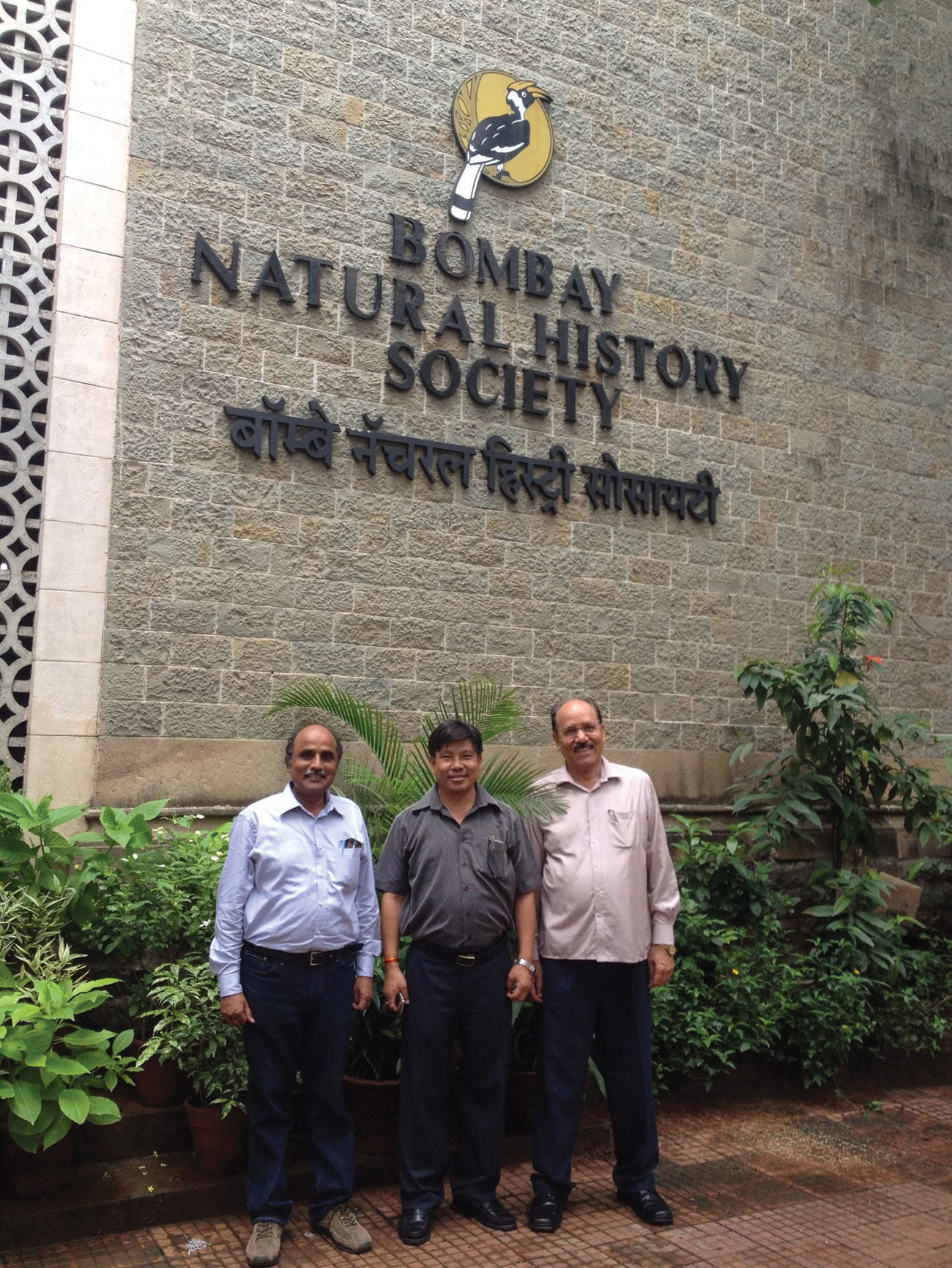
Dr. Vibhu Prakash with the then Member secretary B. S. Bonal, IFS and Director BNHS, Dr. Asad Rahmani in 2012 outside the BNHS Hornbill House.
And where did natural history, which has been your life, come in?
Living in a small town like Meerut, I had limited access to good literature on natural history, so I depended largely on articles in newspapers and magazines. My mother, an educator, who was aware of my interest in nature, encouraged me to read and would share any articles that she came across.
How did you venture into nature as a life choice and who were your heroes, your inspirations?
I was particularly fascinated by the writings of Jim Corbett. I read his book Man Eaters of Kumaon several times and I believe that played a major role in getting me hooked on nature and wildlife. I was absolutely sure I was going to live a life that kept me close to one forest or another and, on the advice of my mother, I decided to try for the Indian Forest Service (IFS).
And the Bombay Natural History Society (BNHS)? How did your life become entwined with the Grand Old Society?
It was a dream come true! In the late 1970s, while I was studying for my graduation, I often went birding along a large drain called the Abu Nullah that flowed through Meerut city. Both sides of the water course were thickly vegetated, which attracted a large variety of birds. One day, a huge flock of European Starlings caught my attention. At the time I had no idea what these noisy, brightly-coloured birds were, and to find out, I purchased the Book of Indian Birds by Dr. Sálim Ali, but could not find them in the book. So, I wrote to Dr. Sálim Ali and to my great surprise and delight, I actually got a response! From that point onwards I would frequently send him letters about new birds that I came across and he would always write back.
And how did that turn into a lifetime association with the BNHS?
On an impulse I wrote to Dr. Sálim Ali to ask if I could work with him on birds! It so happened that my brother married a girl from Mumbai and she suggested I write to the BNHS for employment. Priyali Prakash, my sister-in-law, heard there were vacancies for field biologists at the BNHS and I began preparing my application to join. Dr. Sálim Ali sent me a letter in response, inviting me for an interview for BNHS’s Avifauna Project in October 1980. The interview panel was chaired by Dr. Sálim Ali himself and he asked me a number of questions on birds, mostly based on my letters to him. On December 17, 1980, I was selected and was asked to join an ongoing BNHS project at a large, brackish-water bird haven called Point Calimere in Tamil Nadu.
That’s quite something! Not everyone is ever that lucky!
True! The project site was located right on the seashore and I threw myself into the work, which was very exciting… a dream come true, really. I was a quick learner and discovered different census techniques to estimate bird numbers for species including flamingos and waders. The Avocets were particularly fascinating, as they flew in a formation just above the wetland. Each morning, we would ring hundreds of waders, caught the previous night, to study their migration. It was pure heaven for me to hold the delicate birds in my own hands. I still vividly remember ringing a very rare bird, the Spoon-billed Sandpiper Calidris pygmaea.
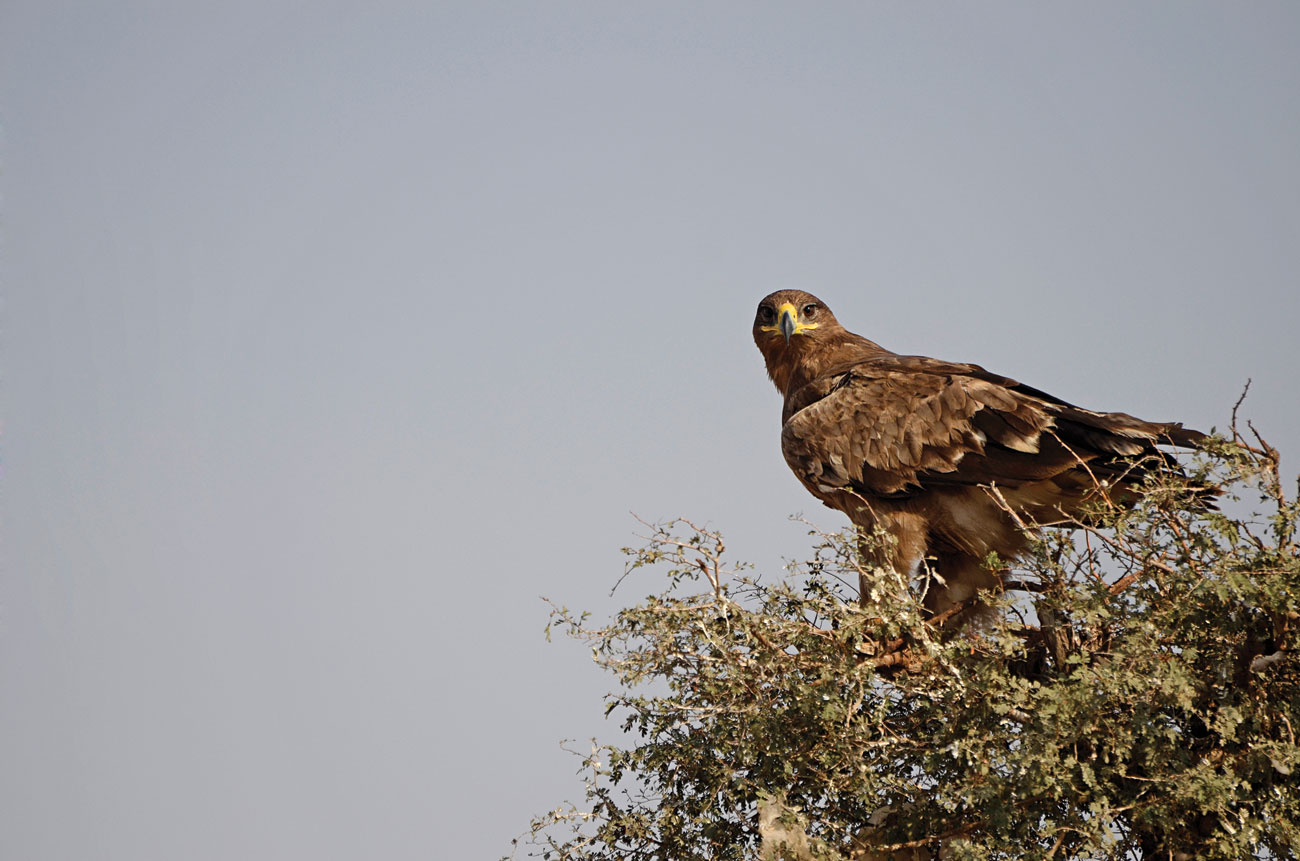
Photo: Public domain/P. Jeganathan.
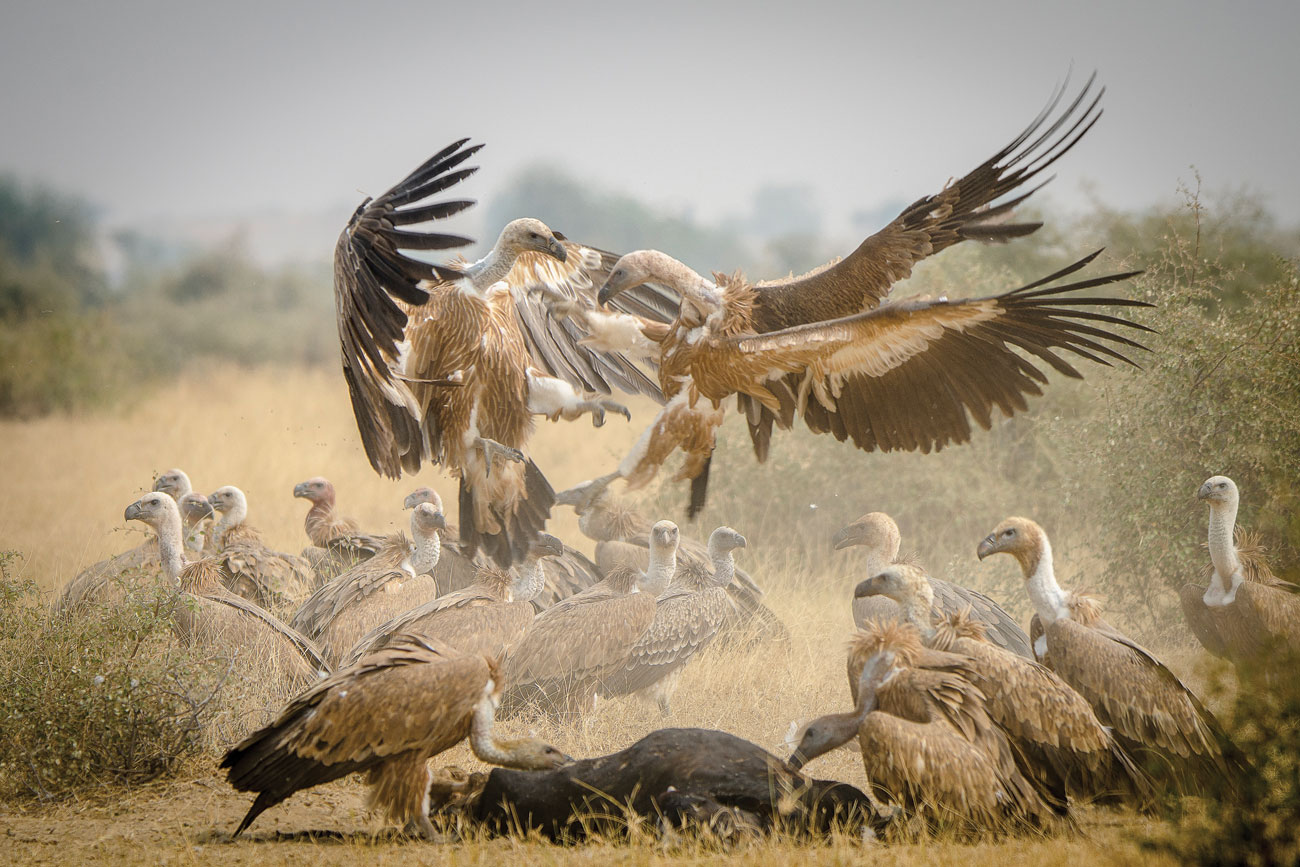
Dr. Vibhu’s Ph.D. thesis was based on the ecology of raptors in the Keoladeo National Park. He also did seminal work on the crash of populations of Gyps vultures. Photo: Saurabh Sawant.
And that was only the start of your tryst with avians!
Yes! After three months of training, I was transferred to the Keoladeo National Park, Bharatpur, a paradise for both waterbirds and raptors. The wetlands were full of Spotted, Steppe and Fish Eagles and Marsh Harriers. I was appointed as a biologist in Dr. V. S. Vijayan’s team. Dr. Vijayan, an accomplished wildlife scientist, was himself Dr. Sálim Ali’s student. He gave me the responsibility of studying raptors (birds of prey) in the park and that became the subject of my thesis, The Ecology of Raptors in Keoladeo National Park starting 1984, with Dr. Vijayan as my guide.
From a small nullah in Meerut to the centre of one of the world’s finest natural history organisations within a few short years. What a meteoric journey!
I could not have asked for more. I was given independent charge of a project on the Status and Distribution of Resident Raptors in India and threw myself into gathering data on various resident species between 1990 and 1993. This included studying raptors at the Velavadar National Park, Gujarat and then in the Rollapadu Wildlife Sanctuary in Andhra Pradesh between 1996 and 1999, with a key focus on the effect of environmental contamination on raptors. It was then that I documented the crash in Gyps species of vulture populations across the country and my focus has not changed since then. Vultures, their biology and conservation have been my life for over two decades.
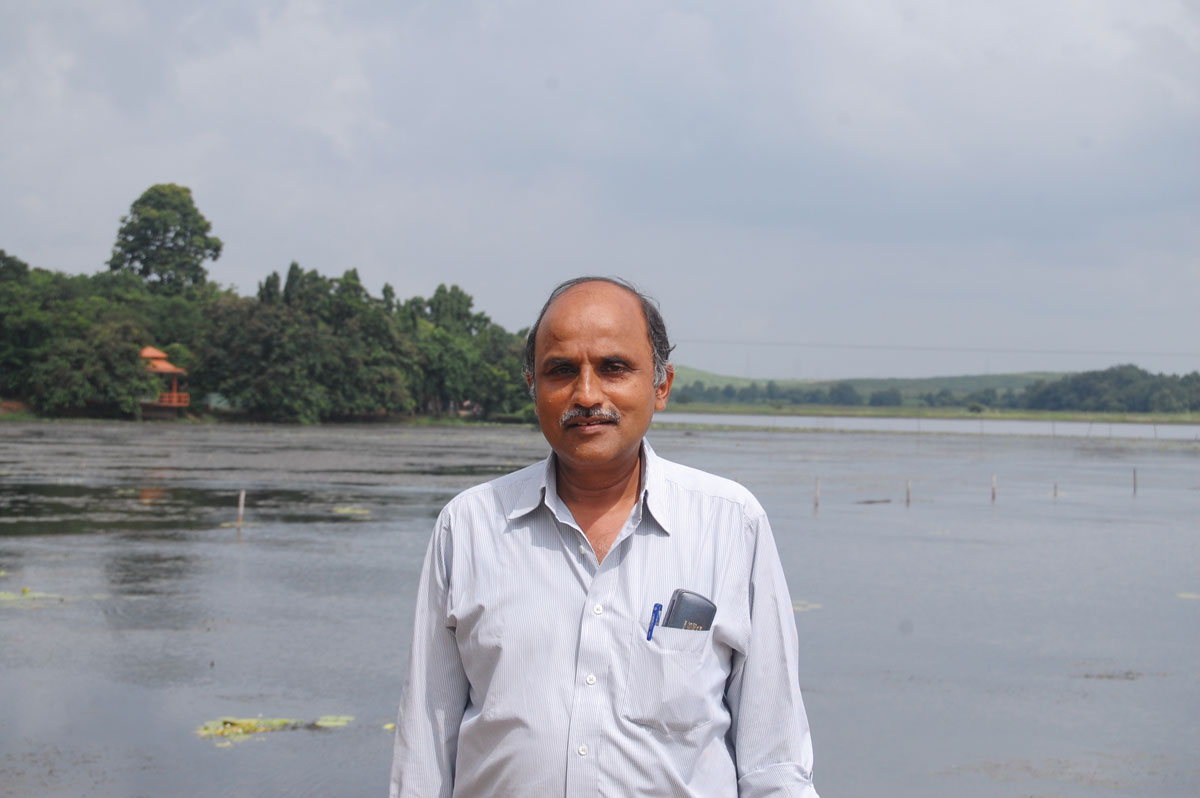
Dr. Vibhu frequently corresponded with Dr. Sálim Ali while growing up, which led him to study birds later in life. Photo Courtesy: Dr. Vibhu Prakash.
Did you interact with ‘The Old Man’ over the years?
I was influenced by him constantly, but my only real contact with Dr. Sálim Ali was during his visits to Bharatpur. Going birdwatching with him in this national park was a huge learning experience. I clearly recall how delighted he once was to see a Spotted Grey Creeper’s (Indian Spotted Creeper) nest, one of his favourite birds. He wanted us to study the bird. He had a reputation of being a difficult taskmaster, and a short-tempered one at that, but while birding, he was extremely pleasant and would describe the behaviour of the birds in detail. He would watch every bird intently, taking time to identify them, and would smile if he was satisfied with his identification.
He once came to see us at the bird ringing site. I was measuring the wing length of a Whiskered Tern. He asked me the length, checked the recorded range of measurements in the book and gave me a very stern look as the length that I had measured was shorter than the recorded range of wing length. He asked Dr. Vijayan to measure it again and then asked to pull out all the records of Whiskered Tern wing length measurements. He said quietly to me: “Inaccurate measurements are useless for scientific studies,” and walked away. This was a life lesson on the care that must be taken in recording scientific observations.
Tell us about raptors, which have been a constant in your life!
Yes, birds of prey are still my first love. I got interested in raptors during my stay at Point Calimere, when Ajai Saxena, who later joined the IFS, showed me a male Eurasian Kestrel roosting in the roof of our quarters. It would come every evening, almost at the same time, and would stay through the night. Ajai also explained its identification and habits and I found myself watching the bird every evening and morning, when it would leave its roost. I found its behaviour of hovering at one place, intently looking for prey, particularly fascinating. When I was sent to Bharatpur, which in my view is probably the best place in the world to watch raptors, it was a dream come true.
And your tryst with vultures?
Our colleague, S. Subramanya was good at raptor identification and I started accompanying him to watch these avian hunters. As part of my Ph.D. on the study of the ecology of raptors, my guide, Dr. Vijayan, helped me scientifically design my raptor study and he was the one who encouraged me to collect information on all species of raptors, including vultures.
Fascinating yes, but it must also have been exhausting work?
It was. I had a difficult morning to evening schedule to follow for four full years from 1984 to 1988. In those years I studied about 43 species, with a focus on the breeding biology of five specific species – Pallas’s Fish Eagle, Lesser (Indian) Spotted Eagle, Greater Spotted Eagle, Short-toed Eagle and Black-shouldered Kite. I also studied the nesting distribution of Oriental White-backed Vulture, King or Red-headed Vulture, Egyptian Vulture, Crested Honey Buzzard, Dusky Horned Owl, Mottled Wood Owl, Collared Scops Owl and Spotted Owlet.
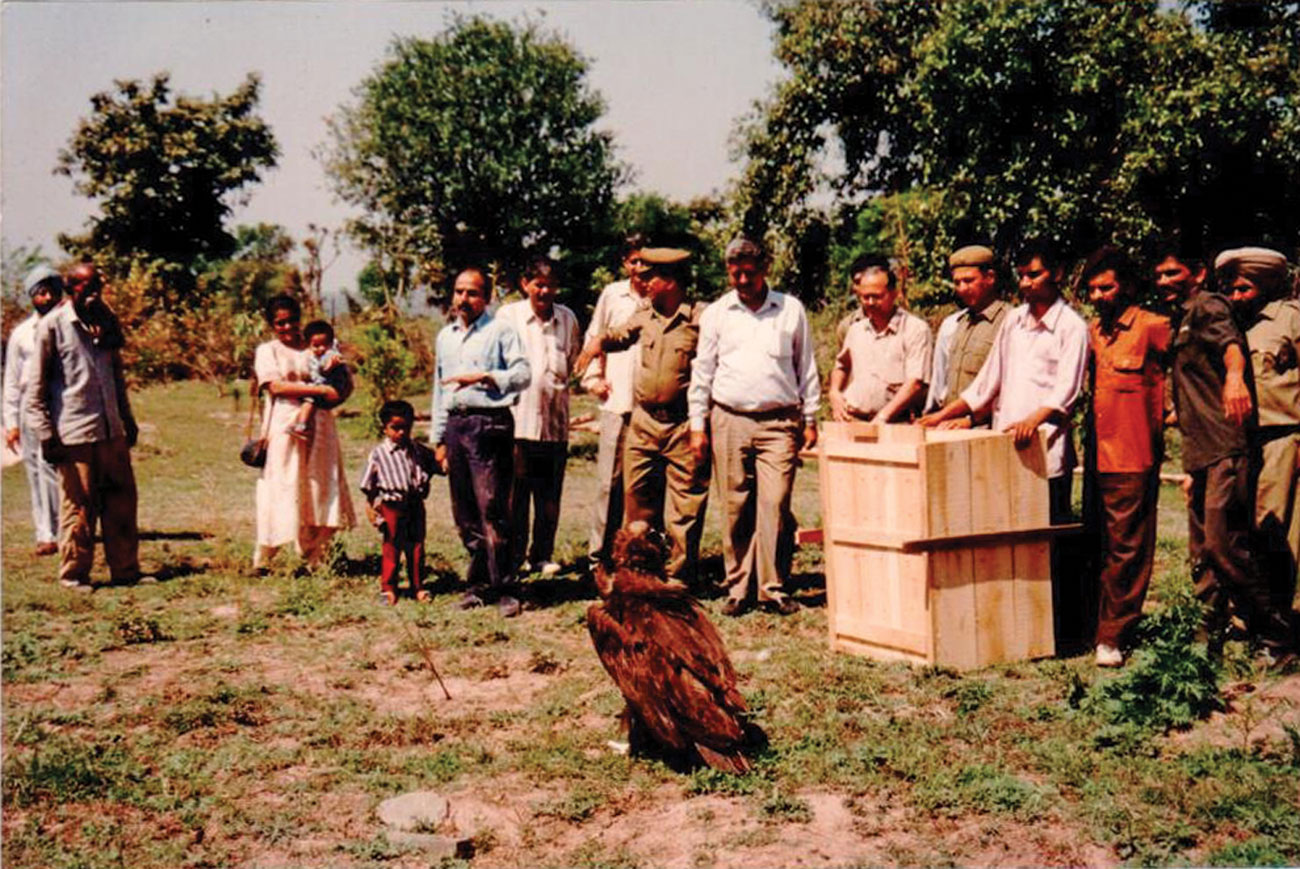
Dr. Vibhu and his team releasing a Cinereous Vulture at the Vulture Conservation and Breeding Centre site in Pinjore in 1997. Photo Courtesy: Dr. Vibhu Prakash.
And how do you feel about your role in the miraculous rescue of vultures from oblivion?
I have to say I feel a deep sense of satisfaction to see a successful Vulture Conservation Breeding Programme in place in India. This gives me hope that we will actually be able to prevent the extinction of vultures. Vulture populations are also reviving in the wild and are stabilising because of several conservation measures taken by Central and State Governments. But we have no room for complacency. Our job is far from done, as vulture populations are still small and highly vulnerable. Until there is a policy decision mandating restriction in the use of vulture-toxic drugs in treating livestock, vultures will continue to be under threat.
In that case, if you had a magic wand, what would your three wishes be?
a) A complete ban on the use of synthetic toxic chemicals including pesticides and insecticides in agriculture and forestry. b) Best practices followed in veterinary care of domestic and wild animals. c) Designated inviolate areas for both humans and wild animals.
How did you feel when the Government of India recently honoured you for the vulture success?
It was a great honour, especially so because vultures are not charismatic, cuddly creatures. The honour really goes to our entire team.
_C-1200_1669968613.jpg)
A Red-headed Vulture being tagged for a satellite telemetry project. Photo Courtesy: Dr. Vibhu Prakash.
Tell us about the partnership between the BNHS and the Royal Society for the Protection of Birds (RSPB)?
The RSPB has been a great support in vulture conservation. They helped us both financially and technically in the programme. Their promise of financial support in establishing and running the Conservation Breeding programme was crucial to its success. The BNHS played the role of an anchor and invited expertise from national and international organisations for vulture conservation. RSPB also helped obtain technical support from other international organisations, while the BNHS worked with a range of State Governments, doggedly continuing its work in the field and setting up successful breeding centres.
Veterinary Drug Diclofenac – the main cause of the crash in vulture populations
Diclofenac, a veterinary non-steroidal anti-inflammatory drug (NSAID), was found to be responsible for the crash in vulture populations in 2004. It is a wonder drug for cattle and humans and gives relief within 15 minutes of administration as it could break the blood-brain barrier. The drug is completely excreted from the animal’s body within 72 hours but if the animal dies before that period, the residues of the drug remain in the body forever. If vultures feed on such an animal carcass, they are exposed to the drug, which is extremely toxic for them and causes renal failure and mortality even in very minute quantities (0.2 mg./kg. of the vulture’s body weight). The presence of diclofenac even in less than 0.1 per cent of the cattle carcasses available to vultures could cause a catastrophic decline in the raptor’s populations. Over 10 per cent of the cattle carcasses were found with drug residues in 2006. The Government of India banned the sale, manufacture and use of veterinary diclofenac in 2006, which was gazetted in 2008, and with another gazette notification in 2015, it restricted the manufacture of the vial size of human formulations of diclofenac to just 3 mL. ampoules to prevent their misuse in treating livestock.
Three other veterinary NSAIDs have been found to be toxic to vultures and cause acute kidney failure. They are ketoprofen, nimesulide and aceclofenac. Unfortunately, they are still not banned for veterinary use. In fact, the drug aceclofenac is a pro-drug as it gets converted into diclofenac within a few hours of administration and has the same harmful effect as that of diclofenac on vultures. It needs to be banned for veterinary use as soon as possible.
Only two NSAIDs, meloxicam and tolfenamic acid, have been found to be safe for vultures.
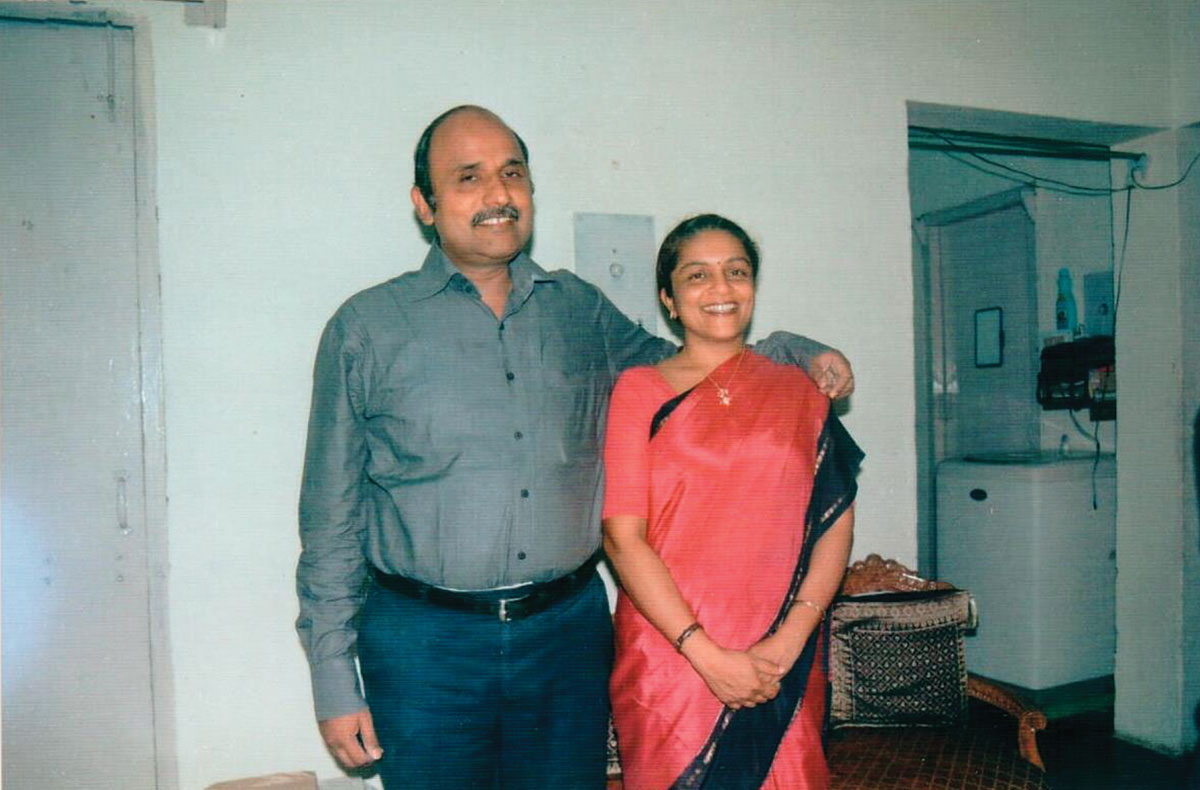
Dr. Vibhu Prakash along with his wife Dr. Nikita, were the principal researchers at the Pinjore Centre, which was supported by the BNHS and RSPB. Photo Courtesy: Dr. Vibhu Prakash.
So, are you hopeful for the future of vultures?
Yes, I believe we have it within us to prevent vultures from going extinct… but only if our conservation efforts remain constant and policymakers work with us to keep vulture populations healthy and free from contamination from toxic pharmaceuticals such as diclofenac and other NSAIDs, that have proven to be equally dangerous for vultures.
Any message for young scientists?
Conservation of species is a long-term effort. Determining the population size of any species is just the beginning of conservation. Regular monitoring to determine population trends, finding the cause of decline in populations and initiating and evaluating conservation measures are very important for developing any conservation strategy. There are no shortcuts in saving a species. And your work to protect the biodiversity of our planet has only begun to be understood by people as an issue concerning human survival itself. Stay true to yourself and true to science and trust the biosphere to fix itself, provided humans learn to respect nature’s imperatives.







_C-1200_1669968613.jpg)
